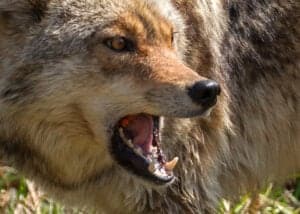Coyotes are extremely common throughout North America and many other regions of the world. Even in urban areas, coyotes can flourish — and leave their droppings behind. Coyote and dog droppings can look very similar. However, they obviously indicate different animals.
There are several reasons you may want to tell the difference between coyote poop and dog poop. For instance, you may have livestock and want to identify what animals are snooping around. Or, you may want to know who’s walking ahead of you on your morning walk. No matter the reason, we’ll explain how to tell the difference below.
Size
Sometimes, the most obvious way to tell the difference is through size. Coyote and dog poop can vary a lot in size. However, dogs come in many different sizes, so it largely depends on the size of the canine. Dog poop is usually larger than a coyote’s, though this obviously isn’t true for very small dogs. It can be between four to six inches.
On the other hand, all coyote poop is pretty much the same size, between three to four inches. Therefore, if the dropping is outside of this range, it’s probably not a coyote.
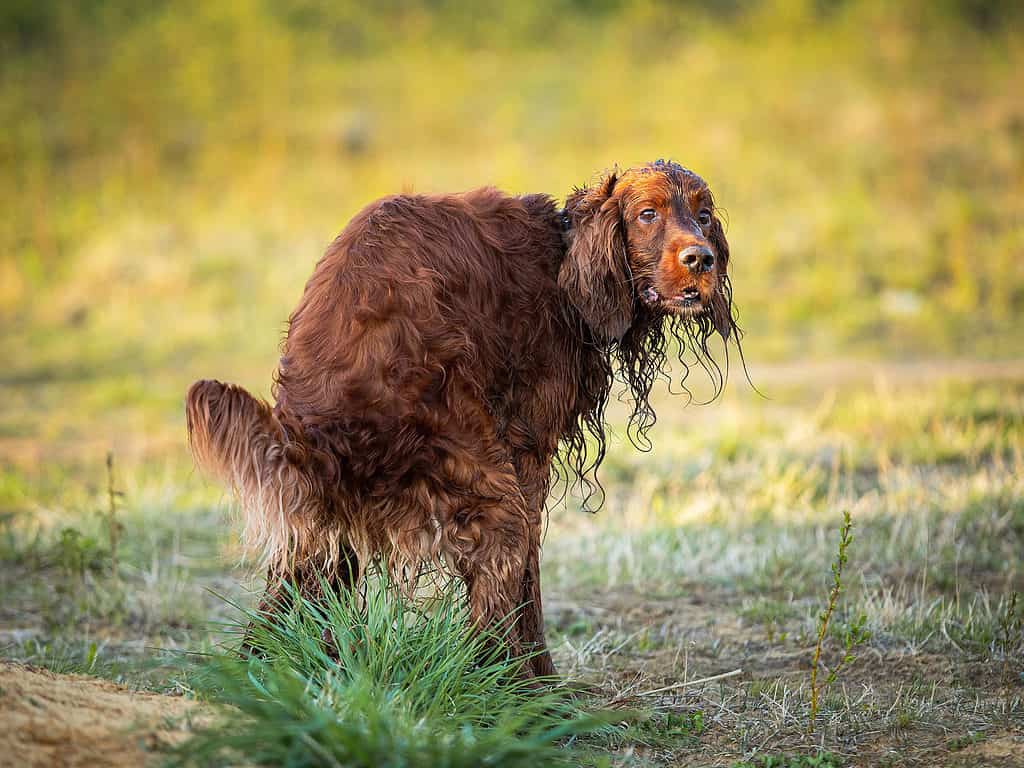
A dog’s poop is usually between four to six inches long.
©iStock.com/MrcTeamStock
Shape
Another difference between the two is shape. Coyote poop is more pointed, while dog poop is often more oval-shaped. Therefore, you can sometimes tell by the shape alone.
Coyote poo may also have a more tubular or rope-like appearance, while dog poop may be more segmented or lumpy. This is because coyotes have a more carnivorous diet than dogs, and their digestive system produces more compact and firm feces.
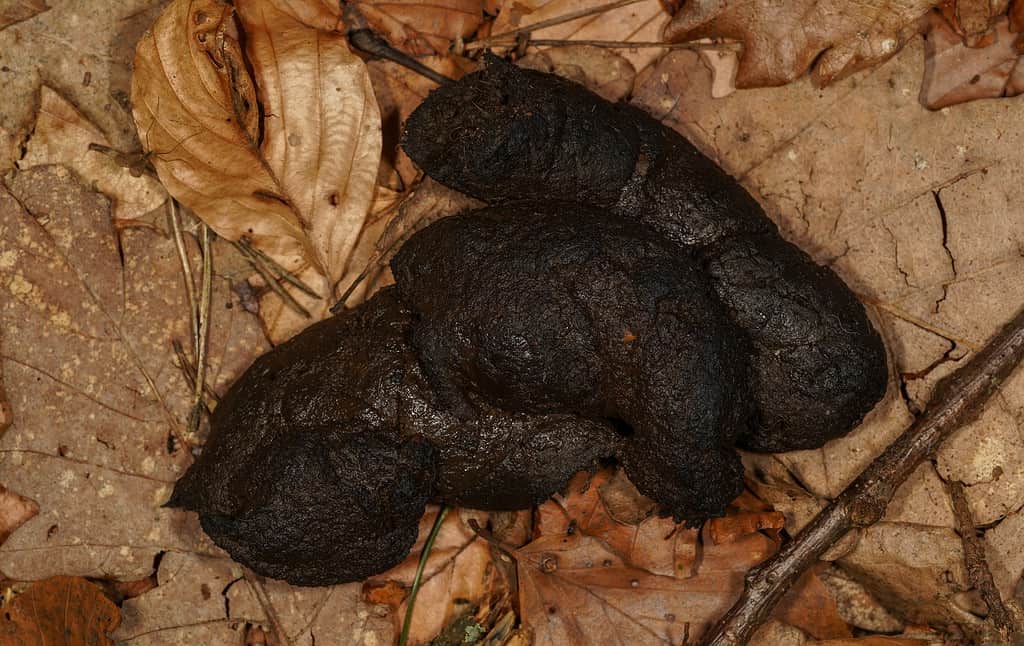
A dog’s feces are more tube-shaped, while coyote poop is more pointed.
©iStock.com/Amazing Nature Photography
Content
If you get your hands dirty, you may also be able to determine the difference based on what the poop contains. Coyote poo often contains bones, hair, and other undigested items from their prey, such as rabbits, rodents, birds, insects, fruits, and berries.
On the other hand, dogs don’t eat any of these. Therefore, they won’t appear in their stool. Dog poop won’t contain anything unusual unless they have a digestive problem or ate something they weren’t supposed to.
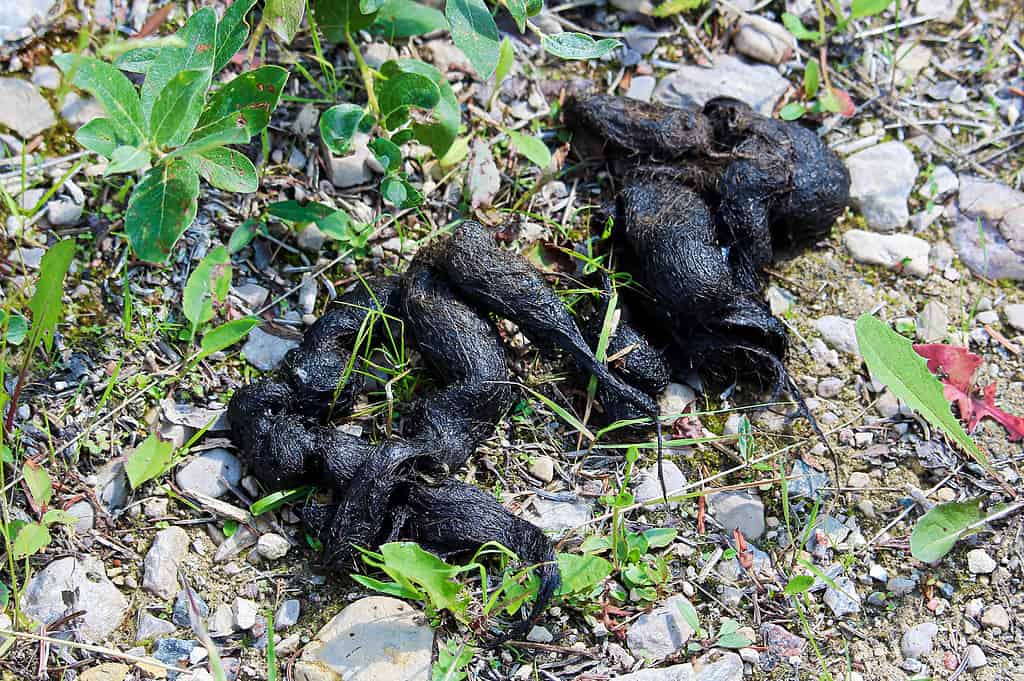
Coyote scat can contain twigs, bones, and other undigested items from their prey.
©iStock.com/Akchamczuk
Risks
When you’re trying to determine what type of poop you’re looking at, you should also consider the potential risks. Coyote poop is often more harmful to you, surrounding animals, and the environment. It’s more likely to carry bacteria and viruses, which can infect you and your pets. These diseases can also be transmitted by contaminated water or soil.
On the other hand, dog poop often carries fewer pathogens, and they are less severe. Often, dogs are vaccinated and more likely to receive medication for their illnesses.
However, both types of poo can pose environmental hazards if left uncollected. They can pollute water sources and spread diseases to other wildlife.
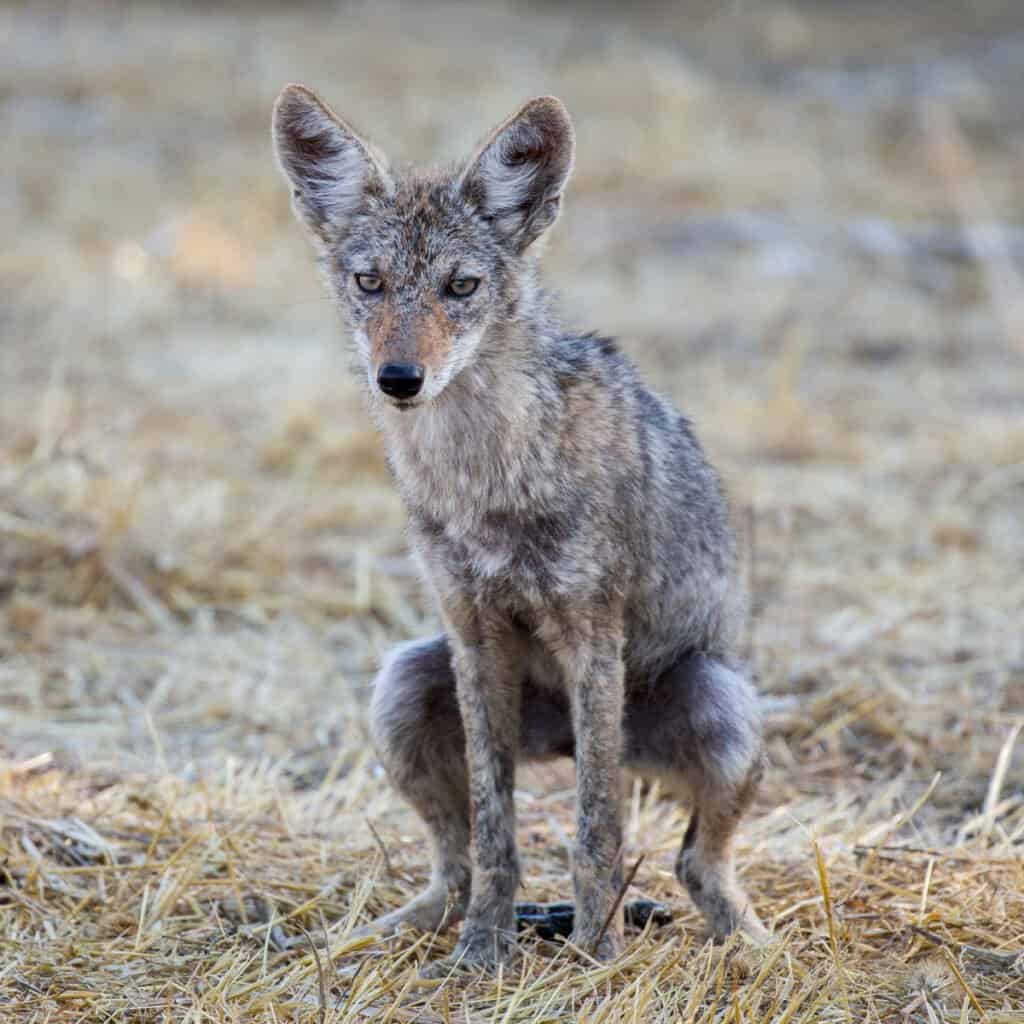
Coyote poop is more likely to carry bacteria and viruses, which can infect you and your pets.
©yhelfman/Shutterstock.com
The photo featured at the top of this post is © National Park Service from USA, Public domain, via Wikimedia Commons – License / Original
Thank you for reading! Have some feedback for us? Contact the AZ Animals editorial team.



